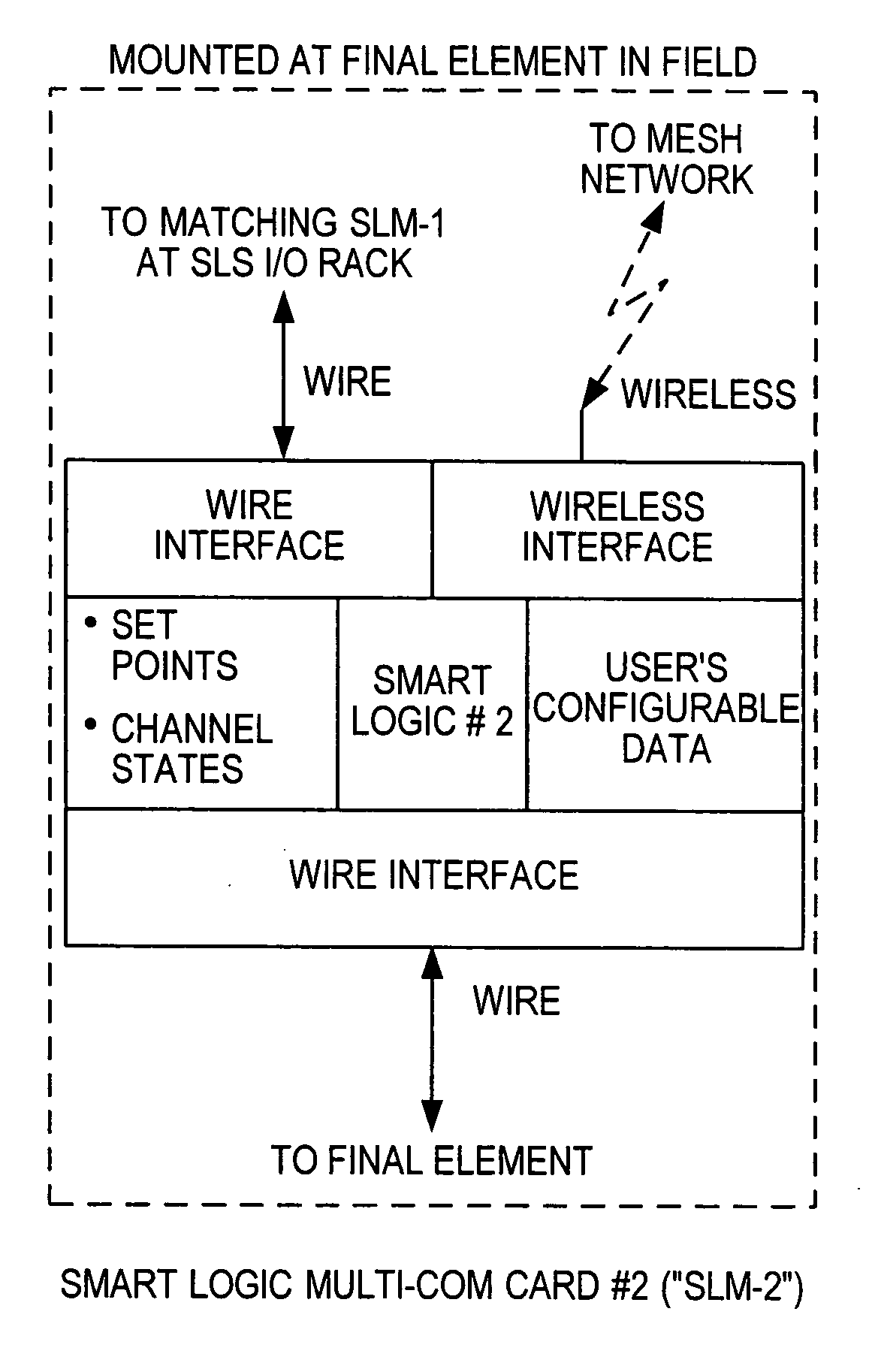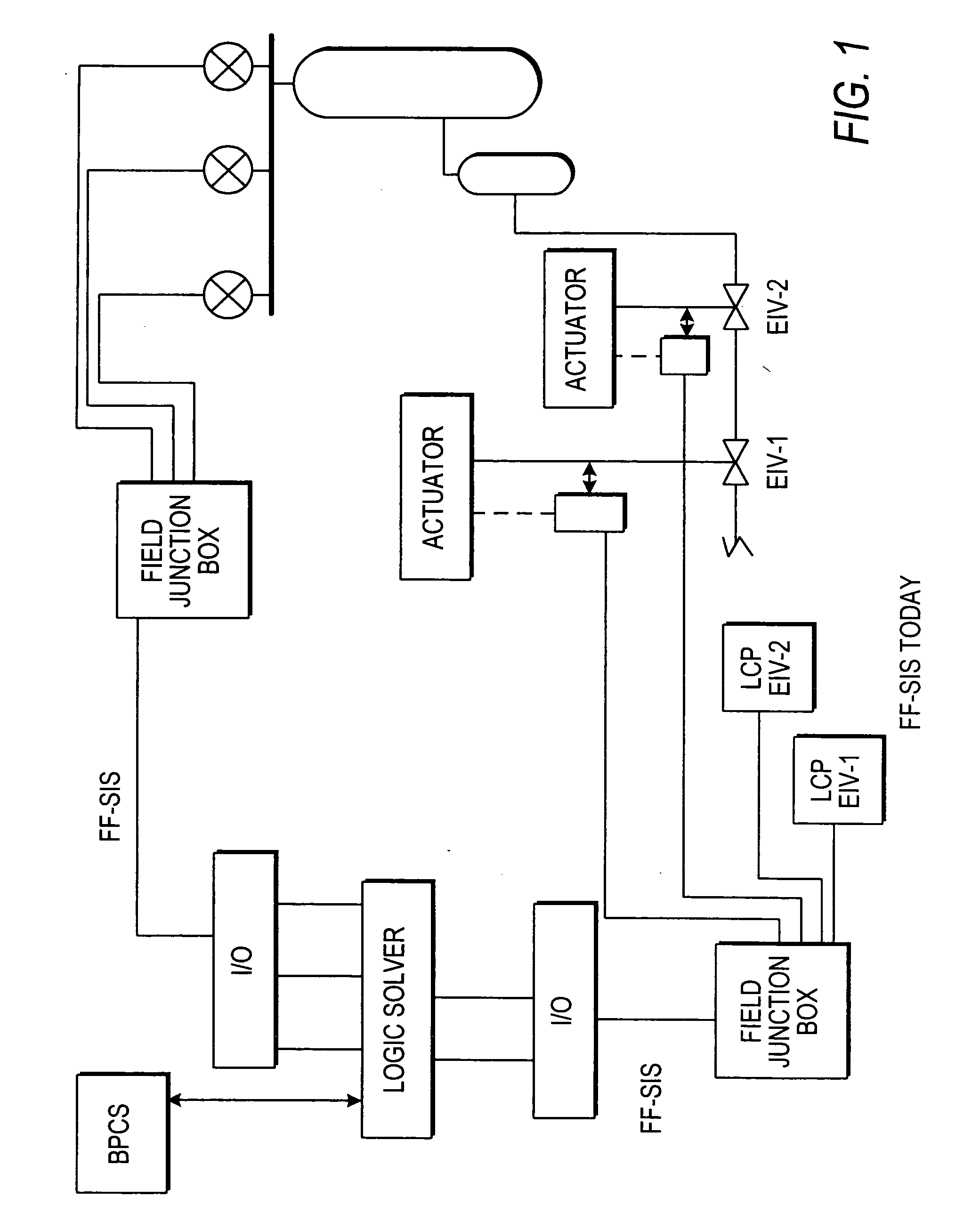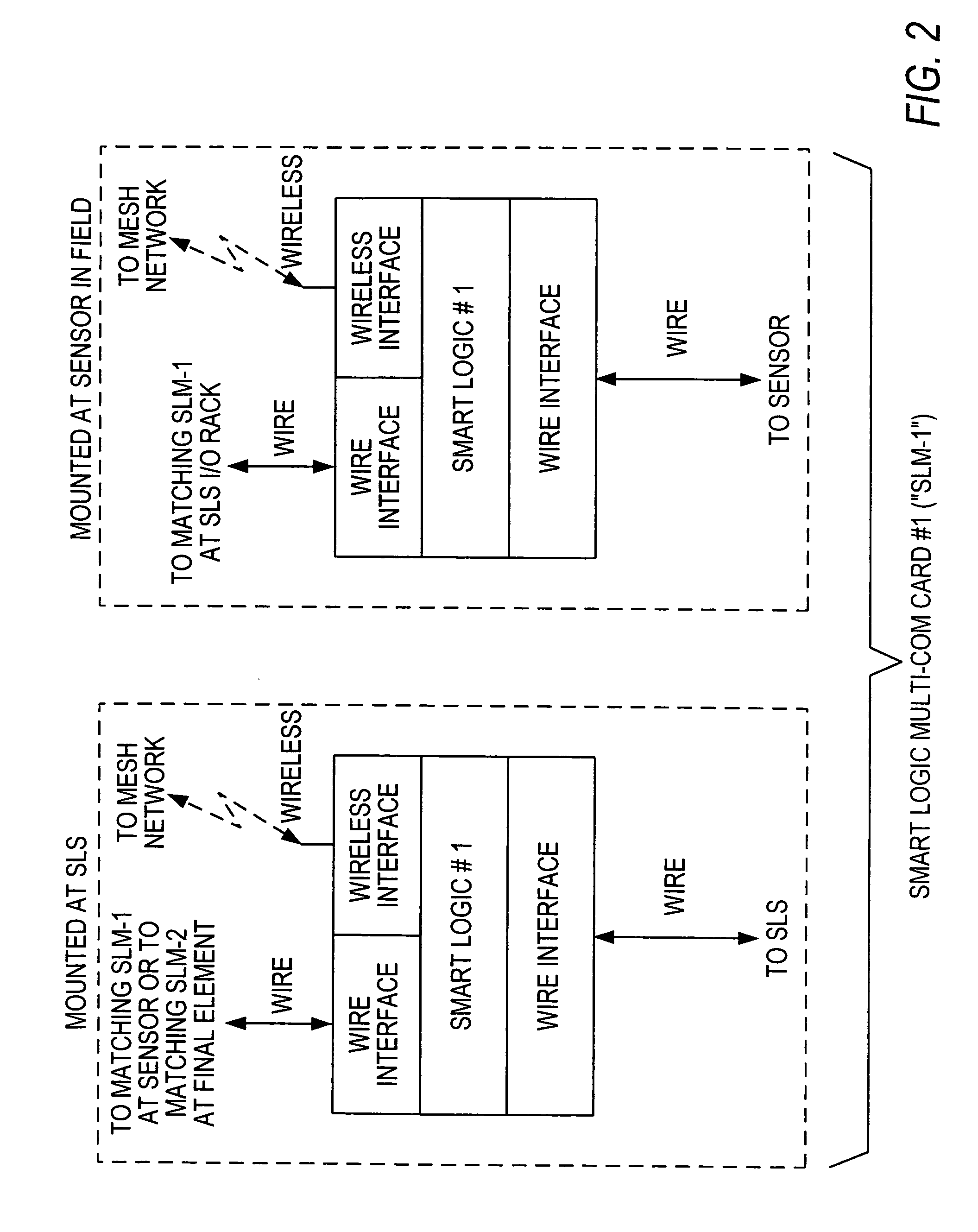Distributed and adaptive smart logic with multi-communication apparatus for reliable safety system shutdown
a multi-communication, intelligent logic technology, applied in the direction of ignition automatic control, electric controllers, instruments, etc., can solve the problems of inconvenience trip or shutdown of process, unfavorable safety demand, and process suffering an unnecessary shutdown or being exposed to risk of safety demand, etc., to achieve greater flexibility and increase decision reliability
- Summary
- Abstract
- Description
- Claims
- Application Information
AI Technical Summary
Benefits of technology
Problems solved by technology
Method used
Image
Examples
case 2
[0081]4. “Red state” (this represents state O,O): the final element's SLM-2 will send two multicast requests to the final element's neighbor list prior to tripping. The plant user can configure the SLM-2's logic, depending upon the application, SIL level, and other factors. In a typical ESD, the user may select the following logic, with parameter Y referring to the percentage of neighboring final elements within the SIFs that are in the tripped state, and Z referring to the percentage of neighboring final elements that have lost all communications with the SLS.[0082]Case 1: Where Y=100%, Z=100%, SIL=3, and the final element in question is in the “red state,” the SLM-2 should be programmed to “fail safe.”[0083] Where Y=0%, Z=100%, SIL=1, and the final element in question is in the “red state,” the SLM-2 should be programmed to “fail steady.”[0084]Case 3: Where Y=100%, Z=0%, SIL=2, and the final element in question is in the “red state,” the SLM-2 should be programmed to “fail safe.”[...
PUM
 Login to View More
Login to View More Abstract
Description
Claims
Application Information
 Login to View More
Login to View More - R&D
- Intellectual Property
- Life Sciences
- Materials
- Tech Scout
- Unparalleled Data Quality
- Higher Quality Content
- 60% Fewer Hallucinations
Browse by: Latest US Patents, China's latest patents, Technical Efficacy Thesaurus, Application Domain, Technology Topic, Popular Technical Reports.
© 2025 PatSnap. All rights reserved.Legal|Privacy policy|Modern Slavery Act Transparency Statement|Sitemap|About US| Contact US: help@patsnap.com



